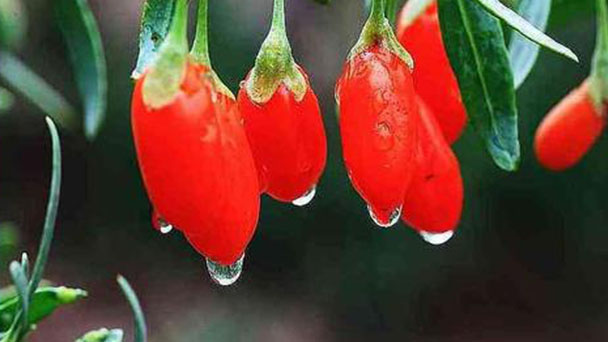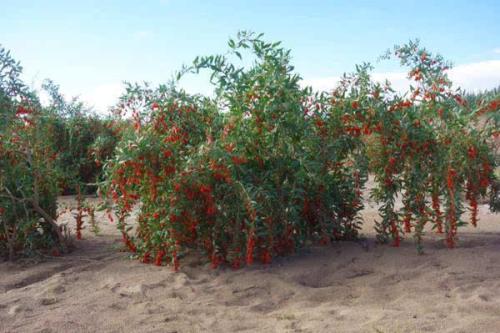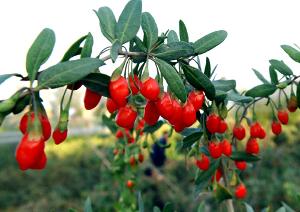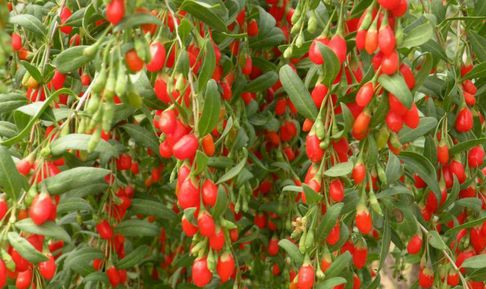How to care for Lycium Chinense
Written by Maggie
Jan 29 2021

Lycium chinense is very common in our lives. It has high value, thus many people want to grow it. How to care for Lycium chinense leaves yellowing or turning white? Here are some Lycium chinense care guides.

Lycium chinense care for leaves yellowing
Lycium chinense yellow leaves are more likely to lose their leaves, which may be caused by damage to the root system. Excessive water and fertilizer will cause damage to the root system of Lycium chinense, making its leaves yellow and fall off. Lack of water and fertilizer means lycium chinense lacks water and nutrients, and leaves can turn yellow and fall off. When we care for Lycium chinense, Lycium chinense may suffer from poor growth due to insufficient light or invasion by pests and diseases and may suffer from yellow or falling leaves. The following are details of Lycium chinense care for leaves yellowing.
Leaves of Lycium chinense yellow and fall off during growth, probably due to root damage. Over-watering or over-fertilizing the soil during curing can cause the roots of Lycium Chinense to rot and fail to properly absorb water and nutrients. When we care for for Lycium chinense, water and fertilizer are caused by too much, reasonable adjustment is needed, and the later period is to adjust the number of watering methods and fertilization.
Lycium chinense requires water and nutrients during its growth, and if the yellow leaves lose their leaves, it may also be caused by insufficient water and fertilizer. When we care for Lycium chinense, Lycium Chinense is deficient in water and fertilizer, and in a dry environment for a long time, there is also a lack of nutrients, and the leaves will grow yellow or fall off. If water and fertilizer are insufficient to be caused by, need to water and fertilize in time.
When we care for Lycium chinense, if there is insufficient light, the leaves will turn yellow and fall off and the fruit and fruit will grow poorly. If it is caused by insufficient illumination, it needs to be given sufficient illumination to make it photosynthesize and accumulate nutrients. Adequate light can promote the growth of fruit and fruit, and also promote the formation of chlorophyll, which makes their leaves bright green.
Lycium chinense is affected by the disease and insects, which will harm the leaves of Lycium chinense, causing the leaves to wilt, yellow, or fall off. Common pests in Lycium Chinense are aphids or mud worms. If infested, the leaves of Lycium Chinense should be pruned. When we care for Lycium chinense, after pruning, you can spray Lycium chinense okapi forest, dimethoate oxide or dichlorvos and other agents to deinsectivate, which is conducive to Lycium chinense recovery.

Lycium chinense care for leaves turning white
The white leaves of Lycium chinense trees may be a sign of powdery mildew, which needs to be cut off and burned. After pruning the branches and leaves, spray the Lycium Chinense tree, such as chlorothalonil, once every 7 to 10 days, and use it continuously to relieve the disease in the later stage. Lycium chinense trees can be sprayed once every 20 days after recovery, which can prevent diseases and pests. The following are details of Lycium chinense care for leaves turning white.
Leaves of Lycium chinense trees are white, possibly due to powdery mildew. If a Lycium chinense tree becomes disinfected during curing, the white leaves and disaffected branches need to be cut off. When we care for Lycium chinense, disordered branches and leaves need to be burned to avoid spreading the disease to other plants. Spray Lycium Chinense trees with chemicals such as Chlorothalonil, or MZ after pruning the disaffected leaves.
Attention should be paid to the drug before use. It should be prepared in a reasonable proportion, otherwise the concentration is too high, and Lycium chinense tree and other drugs will be harmful. Once diluted with water, carefully spray Lycium chinense tree branches, stems, and soil. Spray well. When we care for Lycium chinense, the drug can not be stopped midway, 7 ~ 10 days to spray 1 time, continuous spraying after 2 ~ 3 times, can inhibit the disease.
After the recovery of Lycium chinense trees, management should be strengthened to prevent Lycium chinense trees from becoming infected again. When we care for Lycium chinense, the Lycium Chinense trees need to be regularly sprayed with carbendazim or chlorothalonil and other bactericidal agents. After the agent is diluted with water, it can be sprayed on Lycium chinense trees once every 20 ~ 30 days. Regular spraying can effectively prevent diseases and insect pests and is conducive to the growth of Lycium chinense trees.
In the later stage of conservation, sufficient light, water and fertilizer should be given to the Lycium Chinense tree, which can make it grow healthfully and enhance the disease resistance of the Lycium Chinense tree. When we care for Lycium chinense, proper watering is needed to keep the soil moist. During the growth period, the proper amount of fertilizer is needed, and the fertilizer is mainly compound fertilizer, which can promote the growth of branches, leaves and flowers.

Latest Updated
- Benefits of Bugleweed - 7 Science-backed Health Benefits
- Bugleweed Dangers & Side Effects - Is It Poisonous?
- How to Plant Evergreen Trees - What You Should Know
- When to Plant Evergreens - Grow Guide for Evergreen Trees
- 12 Wonderful Evergreen Shrubs for Your Garden
- 12 Popular Evergreen Plants with Pictures for Beginners
- When And How To Prune A Lilac Bush Like a Pro
- How to Grow & Care for Lilac Vine (Hardenbergia Violacea)
- Japanese Lilac Tree (Syringa Reticulata) Care & Propagation Guide
- Shumard Oak Pros and Cons - What to Know
Popular Articles
- Winter maintenance of Antirrhinum Majus
- How to Grow Terminalia Mantaly Tree
- How to Grow and Care for Crossostephium Chinense
- How to grow Antirrhinum Majus in spring
- Peristeria Elata (Dove Orchid) Profile: Info & Care Guide
- Underwatered Snake Plant (Sansevieria Trifasciata) - Signs And How To Fix
- How to Care for Brazilian Jasmine Plant (Mandevilla Sanderi)
- How to Grow & Care for Graptopetalum Purple Delight in Summer
- Rosa Chinensis (China Rose): Plant Growing & Care Tips
- How to Care for Baby Sun Rose (Aptenia Cordifolia)